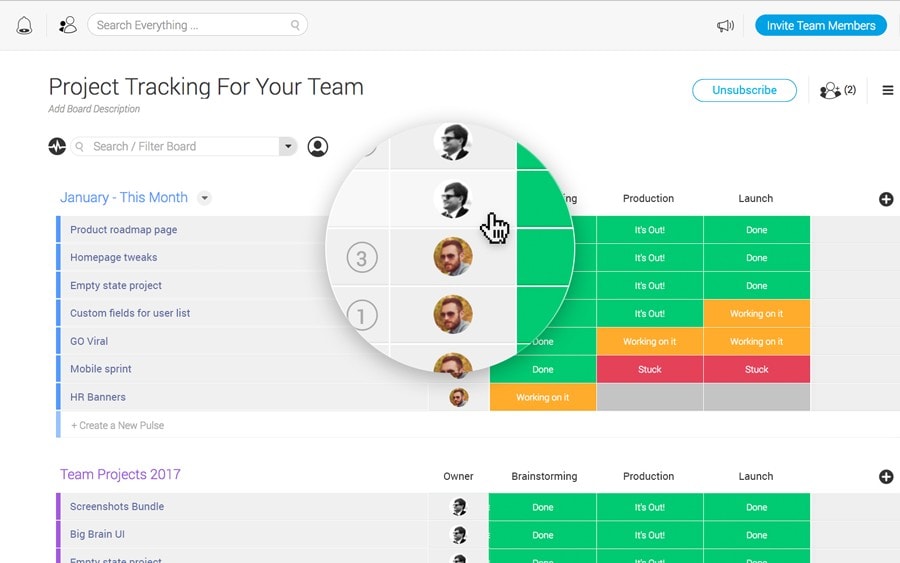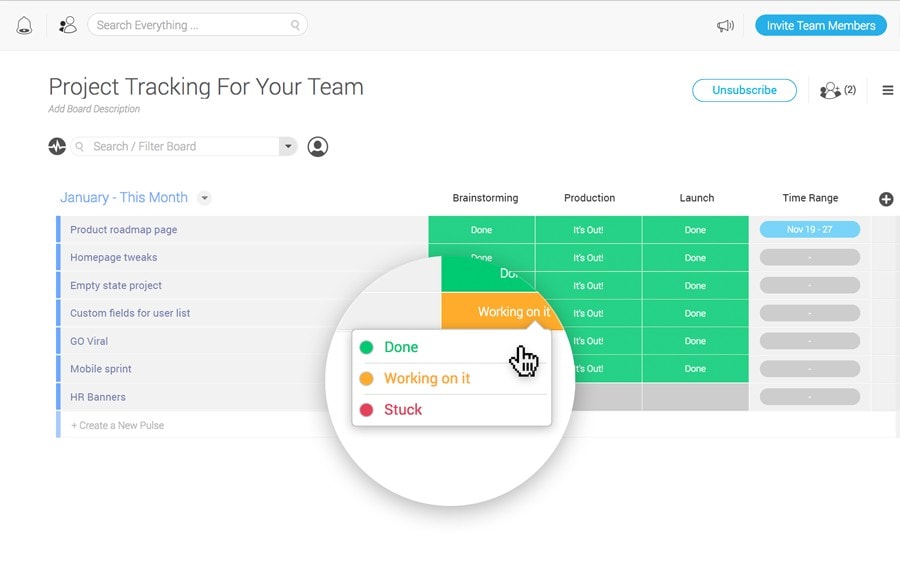Most people are promoted to managers because they are good at what they do. Without good training those managers fall into the traps of intuition. I’ll cover the major issues I found talking with hundreds of managers from working in monday.com.
There are ways to manage that feel intuitive for first time managers and also to veterans but they make team members feel less appreciated and less motivated over time. Work in such teams has constant frictions and as a result the team under-performs it’s potential.
What can you expect from a well run team
— Be productive over longer periods of time — not just in bursts.
— Create a happy environment of team work and helping each other.
— Team members recognize mistakes and fix them fast
— Members see the big picture of what they do not just the job at hand.
Pitfalls:
No Clear Goals
A clear indication for not managing goals well is when managers hand out tasks — one after the other. When a person completes one task they get another one. This is a classic mistake that causes slow decay and lack of motivation. Manager may not notice at first but some in their team lose focus of the big picture, they are handed out small tasks without an understanding of the higher purpose — Managers know — they don’t!
It’s like climbing a mountain, but instead of seeing the peak, managers tell their team members where to place their foot next. Members lose orientation, they don’t know when the team will finally get somewhere and most importantly, they don’t have a real motivation to climb in steep places, they climb slower. After each step they complete they will be told about the next step. To team members this seems endless and pointless — only because they don’t have the goal in front of them!
Solution: Manage the week —make time based achievable goals for the whole team — one for every week. Plan a week ahead, create a list of tasks for the whole team to complete. You need to go through that list with your team and see they understand and accept it. This is a big thing, a common goal people share. It’ll group them together to archive it, They will have satisfaction, knowing they will succeed at the end of the week. As a manager get a great tool — you can finally ask “what are we going to accomplish this week?”. It’s an easy and great way to improve and engage a team— one task at a time don’t do that.
Solution Alternative: Personal ownership — Give big tasks that take a while (more then a week) and give each person freedom of operation to suggest and explore their own path. This requires management attention as people generally require guidance and help, it also requires the manager to not always decide and really give personal freedom. For the team not to lose orientation of the big picture you need a good high-level management — explained later.

No Recognition of Achievements
A side effect to setting no goals and handing of tasks one after another is that there is no recognition of success. Because tasks are small and frequent the positive feedback people receive from mangers is blended with improvement remarks — there is rarely real celebration of success and almost never in front of the whole team. Recognition of success is one of the most important of management tools. Every one of us wants to be recognised for our efforts, it’s basic. Unfortunately regular work patterns and the management tools themselves, don’t help managers find a place for it. When recognition do happen, it’s done randomly without harnessing it’s true power. This is a missed opportunity for managers.
Solution: every week when the lists of tasks are done, gather the team up and go through what was accomplished, celebrate success! You’ll find this is an amazing event that rallies up the team.
The success meeting is:
- A perfect setting to give recognition to each team member and the work they’ve done.
- A great time to go through next week’s goal and use the team’s sense of ability to accept and gear up to the next goal.
- A success meeting is a good setting to drive the team to do more when needed. After the team saw they can reach a goal, after they saw they can succeed — managers can set the bar higher and rally the team to pass it. These events makes the team feel they are winners, it makes them feel they have a leader not just a manager.
In monday.com, as you go through the week tasks turn green, there is inherent sense of success and team recognition, very fast this becomes addictive.
Managing In Silos
The real power of a good team comes when they work together, when they cover up for each other, when they help each other overcome obstacles and yes, also when they criticise each other. This simply can not happen when team members don’t know what other team members are doing. Good managers don’t expect team members to only share within themselves, they incorporate this synchronization in regular workflow. Unfortunately most of the tools used today force isolation. When a tool has a “my tasks” view, it separates the team instead of uniting it.
Solution: Team view, we found that having all the team’s tasks organized in one place, with, clear, visible ownership is the best way. People see what everyone is doing as part of their daily work and they know who’s doing what, they can see progress and updates. Allowing team members to see the big picture of the week — along side with setting the goal (mentioned earlier )— allows the team to meet that goal together!
No Process = Random Chaos
When teams are super small (about 3 people) managing by chaos can work, it even seems fun. The team make a list of tasks and go through them without any clear process. When a team grows and have people with different functions, this becomes a burden. it’s destructive for some team members. Functions like designers, product or writers find they need to make decisions everyone agrees on. To a manager this may seem fine, the manager get a final say and others too, but it’s paralyzing for team members. Not knowing who’s deciding is the number one fun killer! And that’s not all, fun isn’t the only thing that gets hurt, motivation and sense of personal pride is squashed. When everyone decides — no one does — ownership is hurt and as a result personal pride.
Solution: process mapping + ownership, each team has a process it goes through.
Examples:
Product Dev (research > ux , ui > development > QA > launch)
Video Production (Story > Shooting > Post production > approval)
Car Pimp Shop (Receive car, Design plan, Approve, Renovate, Hand off)
You need to map this process as it may have more steps, each step should be a handshake between different people — handshakes are where the problems lay. And when an approval of any kind is needed (art, code, legal) there should be a clear owner (a name attached). This way people know who to work with, they know their path to success in their task.
What about everyone else’s opinions? they matter — as opinions — not as blocking from going forward. The best teams can move forward without everyone agreeing on everything. It was like that before with chaus — there where those who didn’t agree. but it was hidden , it was the people that actually did the work that didn’t agree — they needed to please everyone else — and that’s destructive. With clear ownership the right people decide, conflicts and ideas are brought to the surface in a positive constructive way because everyone know’s who’s in charge and deciding — process is clear! the team is happy!
NOTE: Every team member should be in charge of deciding things on the tasks they perform — just not on all team tasks. If there is a need for a final approval, it can be added too as another step.

Manage top down – not bottom up
Everyone plan top-down, but very few manage their day to day with it. Having a real-time daily update on the high-level plan is the best tool for meeting deadlines and making sense of what’s important and what’s not.
Experienced managers know you can’t understand the state of any project from it’s tasks, tasks completion don’t hold the data of the project completion. The reasons for that is that most of what is done is not written in the task list and the tasks that are left to the end are usually the harder ones. The result is that tasks percent completion is not equal to project percent completion and it means that the ones managing from the bottom-up have no idea where things really stand.
Because experienced managers manage from the top-down, they have a plan that they update, usually on a weekly basis, and by having a weekly sync meeting or requesting weekly email status updates. In bigger teams/companies there are professional project managers that create this updated high-level plan view.
Managing from the bottom up is like knowing the completion of a mountain climb by counting the steps you’ve made towards the top — the chances you’ve made the right assumptions for this count is like winning the lottery. Counting visible checkpoints is better and the only thing you really need.

